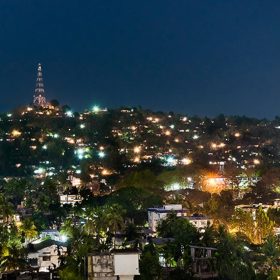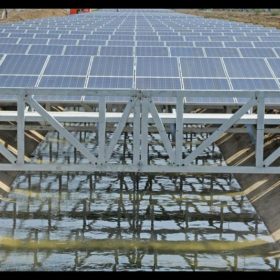Assam takes a giant leap forward with 70 MW solar park
A state hamstrung by low irradiance, tough terrain and regular flooding is trying to move forward its energy transition. Previously, the largest solar project in Assam had a generation capacity of only 5 MW.
NLC completes 591 MW solar power projects in Tamil Nadu
State-owned NLC India Ltd – formerly the Neyveli Lignite Corporation – has commissioned 150 MW of solar power projects at Ramanathapuram and Virudhanagar Districts of Tamil Nadu, taking its total installed solar power capacity in the state to 591 MW.
SECI goes into overdrive with 6 GW tender plans announced in five days
The organization responsible for coordinating India’s push for 100 GW of new solar capacity by 2022 has had a busy week. But, as last year illustrated, tenders alone are not always a guarantee of new generation assets.
The long read: Case for optimization
While India’s solar potential is unquestionable, progress has been uneasy and race-to-the-bottom pricing has held back the adoption of technologies such as MLPE. However, that is beginning to change, writes Prasidh Kumar, CEO of Soreva Energy, as grid modernization requires proactive monitoring and optimization technologies.
Solar made up 50% of India’s new power capacity in 2018
The level of new solar capacity – 8,263 MW – however, was 15.5% down from the 9,782 MW added in 2017 owing to safeguarding duty and GST taking a toll on large-scale PV. While utility-scale solar declined 23% year-on-year, rooftop PV remained a bright spot, and registered impressive growth of 66%.
Schneider Electric pulls out of utility-scale PV business
The French power electronics specialist is pulling out of the utility-scale segment to strengthen its profile in the residential and C&I space.
A solar decade: From 9 MW to 28 GW
There is widespread doubt about whether India can achieve its 100 GW solar target by 2022 but, having started from a base of only 9 MW of capacity 10 years ago, it would be foolish to write off the prospects of this solar superpower.
1.2 GW solar auction sees slight rise in tariffs
As against the all-time low of Rs 2.44 per unit recorded in July last year, the latest SECI auction saw the lowest winning tariff of Rs 2.55 per unit offered by ReNew Power. Other winners included Azure Power, Eden Renewable and SoftBank-backed SB Energy.
The long read: Sweet sweep
The amount and nature of desert dust determines whether daily cleaning of solar modules is a favorable option. However, frequent and water-intensive cleaning, as well as the amount of labor required, can be costly in desert installations. But the ingenuity of automation is on its way to help.
Gujarat to set up 100 MW solar PV project atop Narmada canal
The state-owned Sardar Sarovar Narmada Nigam will set up the 100 MW solar project atop branch canals of river Narmada at an estimated cost of Rs 100 crore. Four locations in central Gujarat have already been identified for the project.















